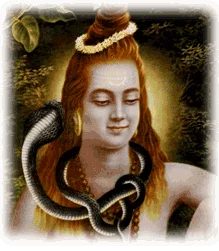Shiva and Shakti: A Yogi’s Perspective
A selection on Shiva and Shakti, from Perspectives on Yoga, from Perspectives on Yoga: Living the Yoga Life, now available at Amazon.com. When the yogi awakens the divine power that pervades his bodies, unifies and directs it upward into the Sahasrara, in time the core of … Continue reading
An Introduction to “Vegetarianism and Occultism” by C. W. Leadbeater
Vegetarianism and Occultism by C. W. Leadbeater was published by the Theosophical Society in 1913. Although things are much better a little over a century later, still there is far to go to realize the ideals set forth in the full article. The author’s words … Continue reading
What is a Worthy Spiritual Teacher Like?
A selection on the Spiritual Teacher, from Living the Yoga Life, a new book by Swami Nirmalananda Giri. In the Srimad Bhagavatam (11.7.33-35) the first human guru, Sri Dattatreya, describes how he had twenty-four gurus, including elements, planets, animals, insects and human beings. A guru … Continue reading
Karma: What Every Aspiring Yogi Needs to Know
A selection on Understanding Karma, from Perspective on Yoga, a new book a new book now available on Amazon and other online bookstores. Everything, without exception, material, or immaterial, arises from a cause, and is a revelation of that cause. Because of this, everything has a … Continue reading
7 Traits of a True Jnani
A selection on Jnana and the Jnani, from Perspective on Yoga, a new book to be published later this year. The perfected jnani has gone beyond the need for the discursive, thinking, sensory-based mind (manas). Further, as Sri Ramana Maharshi frequently pointed out, through diligent tapasya … Continue reading
Jnana: A Yogi’s Guide to What It Is and What It Isn’t
This article on Jnana is taken from “Living the Yoga Life,” a book by Abbot George Burke available for reading on our website here, or as a paperback or ebook here. We must not mistake intellectuality and philosophizing for jnana, as is commonly done. Perfect … Continue reading







